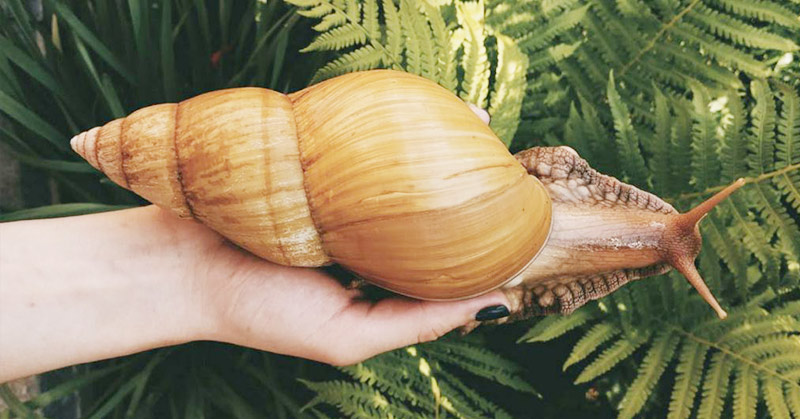Snails are undeniably charming creatures, with their pouty lips and antenna eyes. Watching them munch on lettuce and cucumbers can be quite entertaining, but only if they are small, harmless, and clean. The Giant African Land Snail, on the other hand, is a different story. These massive snails can grow up to 20 cm in length and are considered dangerously invasive species.
Native to East Africa, these snails have spread to various parts of the world, posing a threat to agriculture and biodiversity. Their voracious appetite and reproductive capabilities make them difficult to control, leading to their classification as invasive and dangerous. They are known to carry parasites that can cause serious health issues in both humans and animals.
In Latin America, efforts are being made to study and regulate the population of these snails to minimize their impact on the environment and human health. Despite their potential for use in cosmetic products and escargot farming, the risks they pose outweigh any benefits.
Unfortunately, some individuals have resorted to smuggling these snails as pets, unaware of the dangers they bring. These snails can wreak havoc on ecosystems and pose significant health risks to those who come into contact with them. Authorities are warning against keeping these snails as pets and are taking measures to prevent their spread.
It is crucial to raise awareness about the risks associated with these giant snails and to prevent their further proliferation. Their size may be alluring to some, but the consequences of their introduction into new environments can be devastating.
Dangerously Invasive species
The sheer size and reproductive abilities of the Giant African Land Snail have earned it the reputation of being a dangerously invasive species. Its presence in certain regions has led to strict regulations and even bans in some countries, including the United States, Canada, and Australia.
This species has been classified as one of the world’s 100 most invasive alien species, creating significant challenges for conservation efforts. Their lack of natural predators and rapid reproduction make them a formidable threat to ecosystems and agriculture.
In addition to their impact on the environment, these snails can also transmit harmful parasites to humans and animals, leading to serious health issues. It is essential to take proactive measures to prevent the further spread of these invasive snails and protect biodiversity.
Invading Latin America
In Latin American countries like Brazil and Argentina, the Giant African Land Snail has gained attention for its potential use in various industries, including cosmetics and cuisine. However, the risks associated with these snails far outweigh any benefits they may offer.
Governments in countries like Colombia, Venezuela, and Argentina have initiated efforts to study and control the snail population to mitigate their impact on agriculture and public health. These snails have been linked to the transmission of parasites that can cause serious illnesses in humans and animals.
While there may be potential economic benefits to utilizing these snails, the risks they pose to ecosystems and public health cannot be ignored. It is crucial to implement effective strategies to regulate and control the spread of these invasive species.
Smuggling the snails as pets – A risky venture creeping through the United States
In recent years, there has been a resurgence of Giant African Land Snails in the United States, particularly in Florida, due to illegal smuggling. These snails pose a significant risk to biodiversity and human health, as they carry parasites that can cause serious illnesses.
Despite their size and appearance, these snails are not suitable pets and can wreak havoc on ecosystems if released into the wild. Authorities are urging the public to refrain from keeping these snails as pets and to report any sightings to prevent their further spread.
It is essential to educate the public about the dangers associated with these giant snails and to take proactive measures to prevent their proliferation. By working together to address this issue, we can protect our environment and safeguard public health.
Sources
- Admin. Giant African Land Snail. Snail-world. https://www.snail-world.com/african-giant-snail/. Retrieved 10-01-2020
- GLOBAL INVASIVE SPECIES DATABASE. IUCN. https://www.iucngisd.org/gisd/species.php?sc=64. Retrieved 10-01-2020
- Admin. Giant African land snails are invading Latin America. Latin American Science. https://latinamericanscience.org/2013/08/giant-african-land-snails-are-invading-latin-america/. Retrieved 10-01-2020
- Admin. People Are Buying These Pet Snails That Are The Size Of Small Dogs. Jumble Joy. https://www.jumblejoy.com/dutch-inventor-confirms-ocean-clean-working-great-2. Retrieved 10-01-2020






